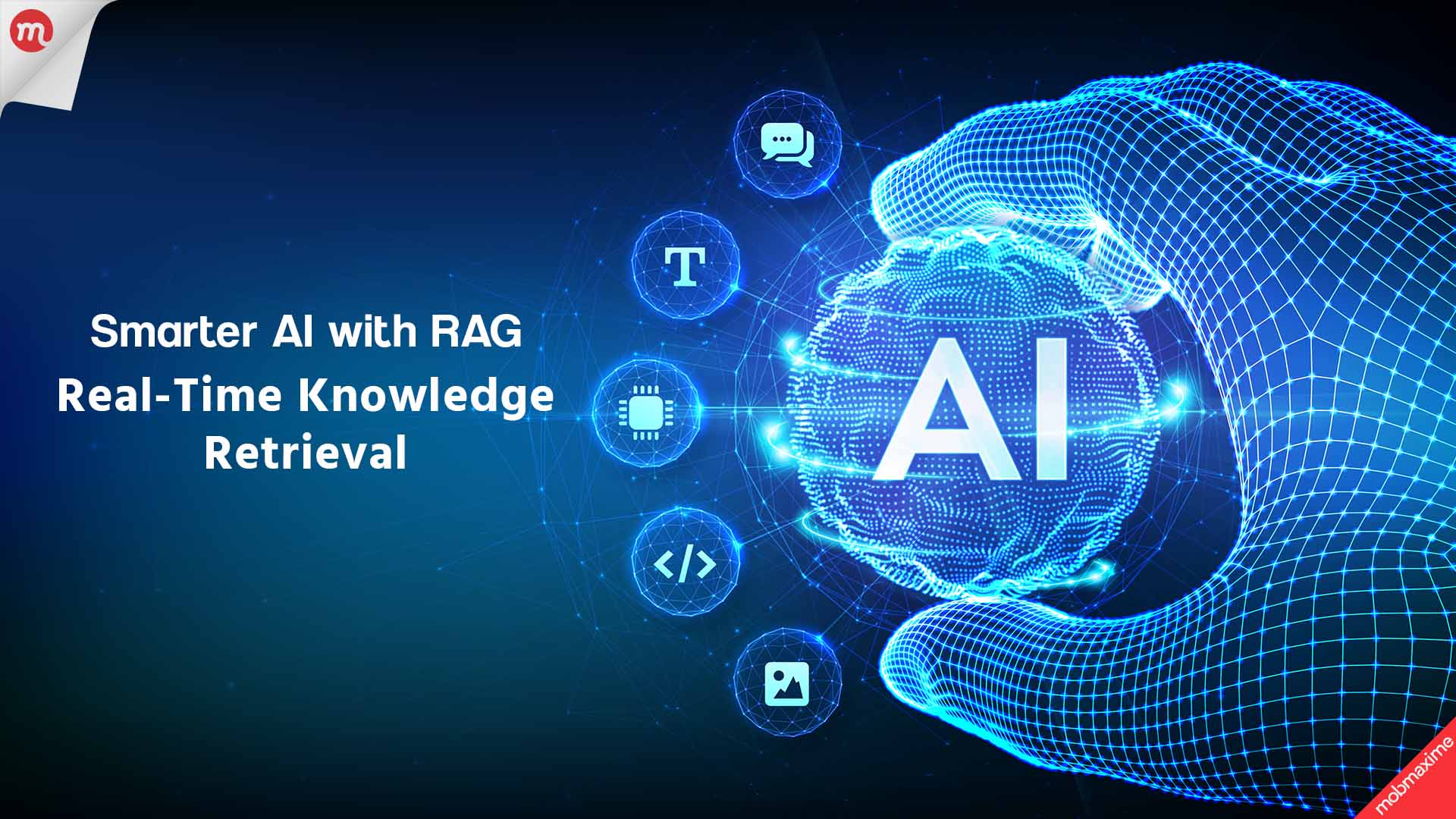Unlocking the Power of RAG: Smarter AI with Real-Time Knowledge Retrieval

As artificial intelligence (AI) evolves, so do our expectations of what it can achieve. Today’s users don’t just want fluent responses—they expect accuracy, relevance, and real-time intelligence. But how can AI deliver timely, factually accurate results in a world where knowledge is constantly changing?
Enter Retrieval-Augmented Generation (RAG)—a powerful architecture that merges the fluency of large language models (LLMs) with the precision of external, real-time data access.
In this post, we’ll dive into what makes RAG so transformative, why it’s necessary, and how industries are using it to build AI with real-time data access that’s both powerful and trustworthy.
What is Retrieval-Augmented Generation?
Retrieval-Augmented Generation is a hybrid architecture that enhances traditional language models by integrating a retrieval system. While LLMs are trained on vast static corpora, they cannot naturally access information post-training. This creates a ceiling in terms of accuracy and freshness—two critical requirements in enterprise AI.
RAG solves this by allowing the AI model to search external sources at inference time. When prompted, it fetches the most relevant content from documents, databases, or APIs, and uses that to generate a contextually aware response.
Why LLMs Alone Aren’t Enough
Large language models with retrieval outperform traditional models for one main reason: they don’t rely solely on memorization.
Here are the key limitations of traditional LLMs:
-
Static training: They don’t update unless retrained.
-
Hallucinations: They may “make up” answers if they don’t know something.
-
Limited factual accuracy: Especially on recent or domain-specific topics.
By augmenting LLMs with external knowledge, RAG injects factuality into fluency. The retrieval component accesses a live, dynamic knowledge source—ensuring that even if the model hasn’t “seen” the information during training, it can still respond appropriately.
How RAG Works
The RAG pipeline typically includes:
-
Retriever: A semantic search engine (often using vector embeddings) identifies relevant chunks of information from a database or document corpus.
-
Generator: A pre-trained LLM uses the retrieved content to generate responses tailored to the prompt.
-
Reranker (optional): Scores and filters the results to ensure relevance and clarity.
This enables knowledge-augmented generation—a process that enriches LLM outputs with accurate and relevant content sourced at the moment of interaction.
Best Use Cases for RAG in AI
The ability to combine retrieval and generation opens up powerful possibilities across industries. Here are the best use cases for RAG in AI:
- Enterprise Knowledge Assistants
Employees spend hours searching for answers across internal wikis, policies, and tools. RAG-based assistants can consolidate this into a single smart interface that fetches real-time answers to HR, legal, technical, or onboarding questions.
- Customer Support Automation
RAG enhances support bots by letting them pull from documentation, FAQs, or support tickets. Unlike scripted bots, these systems adapt to user queries dynamically, delivering accurate responses in real time.
- Healthcare and Legal Intelligence
Fields like healthcare and law demand both accuracy and traceability. RAG systems can pull the latest regulatory updates, medical guidelines, or legal precedents while also citing sources—reducing liability.
- Research & Academia
Whether for academic research, scientific analysis, or technical writing, RAG allows AI tools to access peer-reviewed sources, textbooks, or institutional repositories—perfect for summarization and content drafting.
- Financial Analysis & Reporting
In finance, news and figures change daily. RAG systems can fetch and analyze market reports, earnings calls, and SEC filings to generate summaries, insights, or compliance alerts.
RAG for Chatbot Development
Traditional chatbots are often rule-based and limited to pre-scripted flows. But in today’s world, user expectations go far beyond menus and static answers.
With RAG for chatbot development, companies can build bots that:
-
Search live knowledge bases and return accurate answers.
-
Understand multi-turn queries with complex dependencies.
-
Minimize hallucinations by grounding every response in real documents.
For example, an e-commerce bot using RAG could pull return policies, shipping status, or even inventory data in real time—without ever sounding robotic.
Enabling AI with Real-Time Data Access
RAG represents the evolution from passive, pre-trained models to AI with real-time data access. This means:
-
Freshness: Models respond with today’s knowledge—not last year’s.
-
Flexibility: Easily adapt to new topics or sources without retraining.
-
Compliance: Safer outputs through citation and traceability.
Industries with fast-changing information—such as tech, media, finance, and healthcare—benefit greatly from RAG-based systems that stay current by design.
Comparing RAG to Traditional NLP Pipelines
| Feature | Traditional NLP | RAG-Based Systems |
|---|---|---|
| Data Update Frequency | Rare (via retraining) | Live at inference time |
| Accuracy on Niche Topics | Low | High (with domain retrieval) |
| Hallucination Rate | High | Low (factual grounding) |
| Customization Effort | High | Moderate |
| Content Freshness | Stale | Real-time |
Challenges to Consider
While powerful, RAG comes with its own complexities:
-
Retrieval quality: A bad retriever leads to poor outputs.
-
Latency: Fetching real-time content can be slower than pure generation.
-
Data governance: Systems must handle secure and private data responsibly.
The solution? Thoughtful architecture, rigorous testing, and working with partners experienced in deploying production-ready RAG pipelines.
Final Thoughts
We’re witnessing the rise of a new generation of AI—one that learns with external knowledge, adapts to context, and responds with real-time intelligence. Retrieval-Augmented Generation sits at the heart of this transformation.
Whether you’re building internal knowledge tools, smart customer support agents, or domain-specific assistants, RAG unlocks a whole new level of capability. It’s not just about AI that sounds human—it’s about AI that’s grounded in truth.
Ready to Build Smarter AI?
At MobMaxime, we specialize in designing and deploying AI systems powered by knowledge-augmented generation. Whether you’re exploring RAG for search, support, or automation—we can help bring your ideas to life.
Let’s talk! Contact us today for a free consultation and see how RAG can empower your next-gen AI application.
Join 10,000 subscribers!
Join Our subscriber’s list and trends, especially on mobile apps development.I hereby agree to receive newsletters from Mobmaxime and acknowledge company's Privacy Policy.
